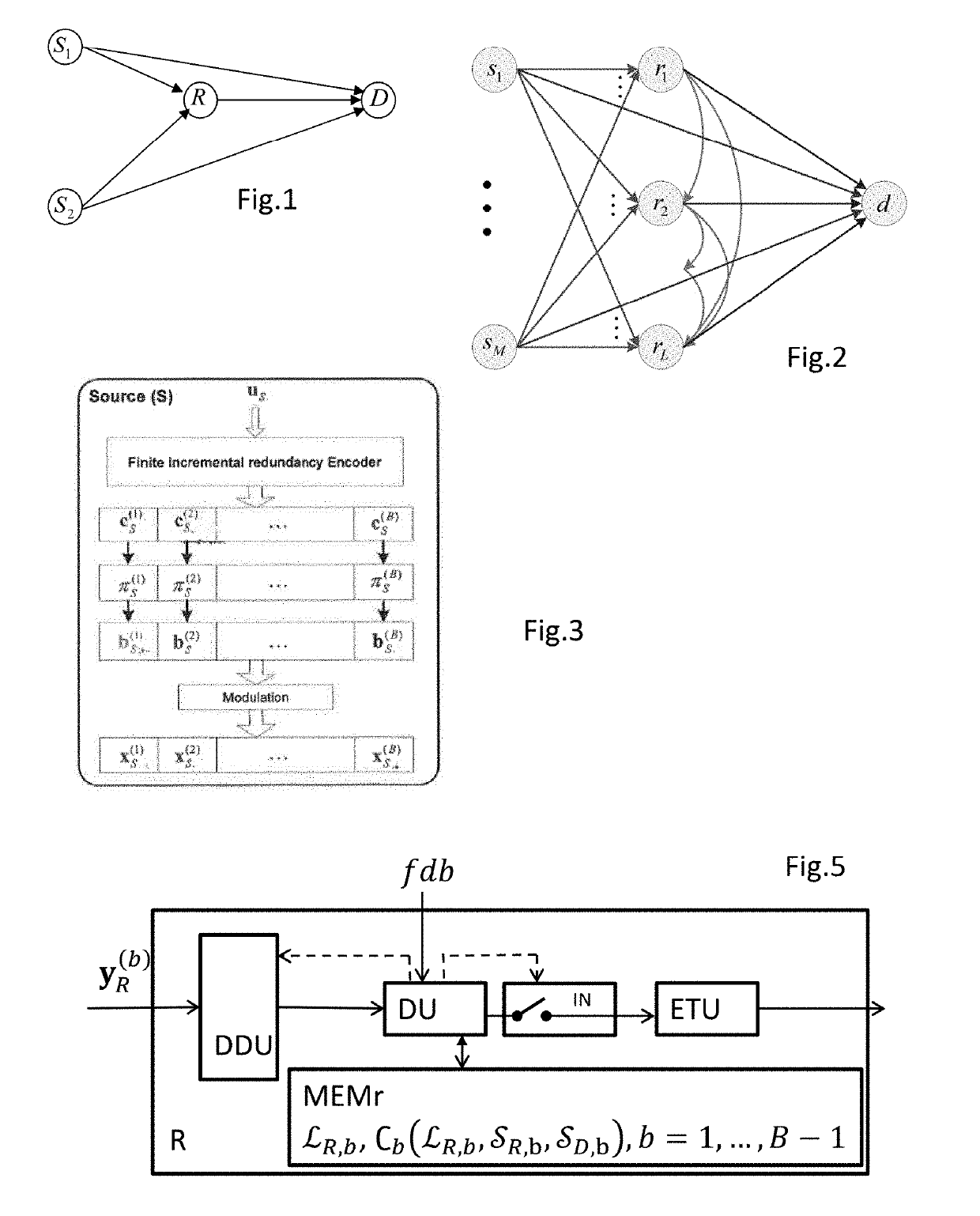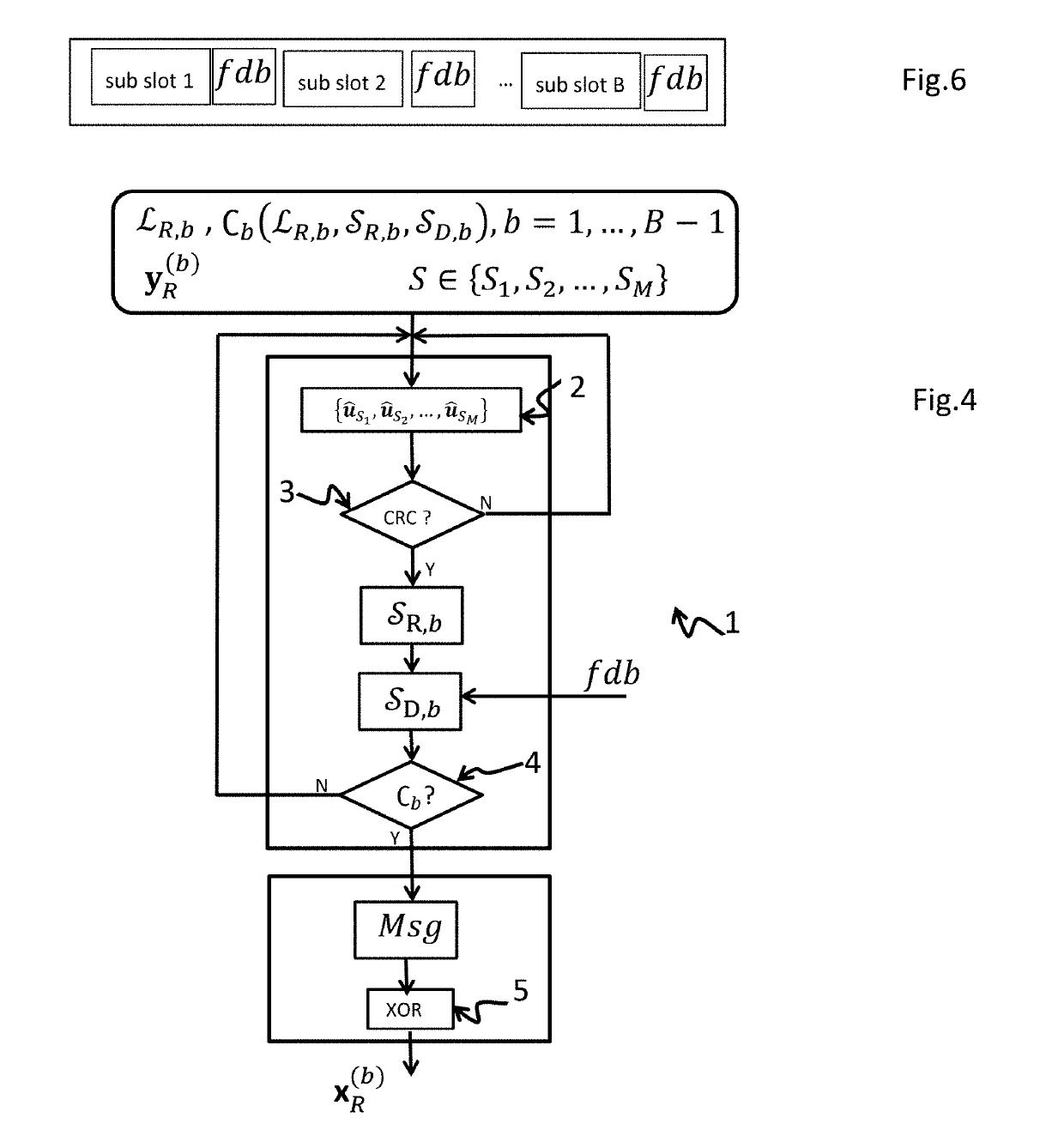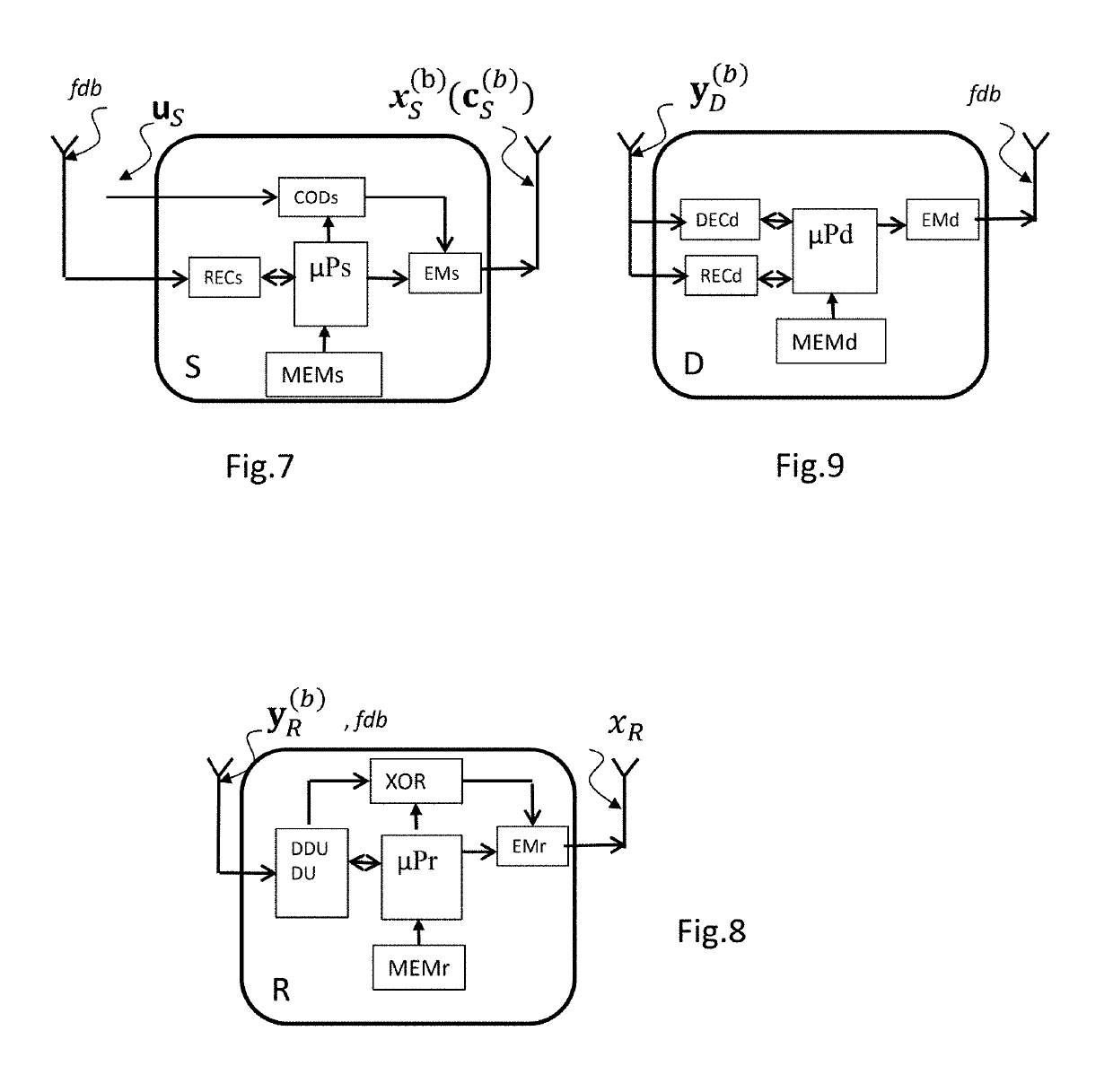Method for transmitting a digital signal for a system having at least one dynamic half-duplex relay with selective logic, corresponding program product and relay device
a digital signal and relay technology, applied in the field of network coding, can solve the problems of half-duplex relay, difficult mobile network, and relatively mediocre transmission reliability
- Summary
- Abstract
- Description
- Claims
- Application Information
AI Technical Summary
Benefits of technology
Problems solved by technology
Method used
Image
Examples
Embodiment Construction
[0076]The context of the invention is that in which several sources (senders) S1, . . . , SM wish to dispatch their respective messages to a common destination D with the aid of at least one half-duplex relay {R1, R2, . . . , RL} as illustrated by FIG. 2. When there are several relays, each can utilize the signal sent by the other active relays.
[0077]There is no constraint on the transmission channel; it can be a fast- or slow-fading channel, it can be frequency selective, and it can be MIMO. In the subsequent description, the nodes (sources, relays and destination) are assumed perfectly synchronized and the sources are independent (there is no correlation between them).
[0078]A transmission cycle is decomposed into T transmission intervals (time slots). The duration of a cycle depends on the parametrization of the system and in particular the MAC layer according to the split into seven layers of the ISO. At each transmission interval, each source has a message of K bits to be transm...
PUM
 Login to View More
Login to View More Abstract
Description
Claims
Application Information
 Login to View More
Login to View More - R&D
- Intellectual Property
- Life Sciences
- Materials
- Tech Scout
- Unparalleled Data Quality
- Higher Quality Content
- 60% Fewer Hallucinations
Browse by: Latest US Patents, China's latest patents, Technical Efficacy Thesaurus, Application Domain, Technology Topic, Popular Technical Reports.
© 2025 PatSnap. All rights reserved.Legal|Privacy policy|Modern Slavery Act Transparency Statement|Sitemap|About US| Contact US: help@patsnap.com



